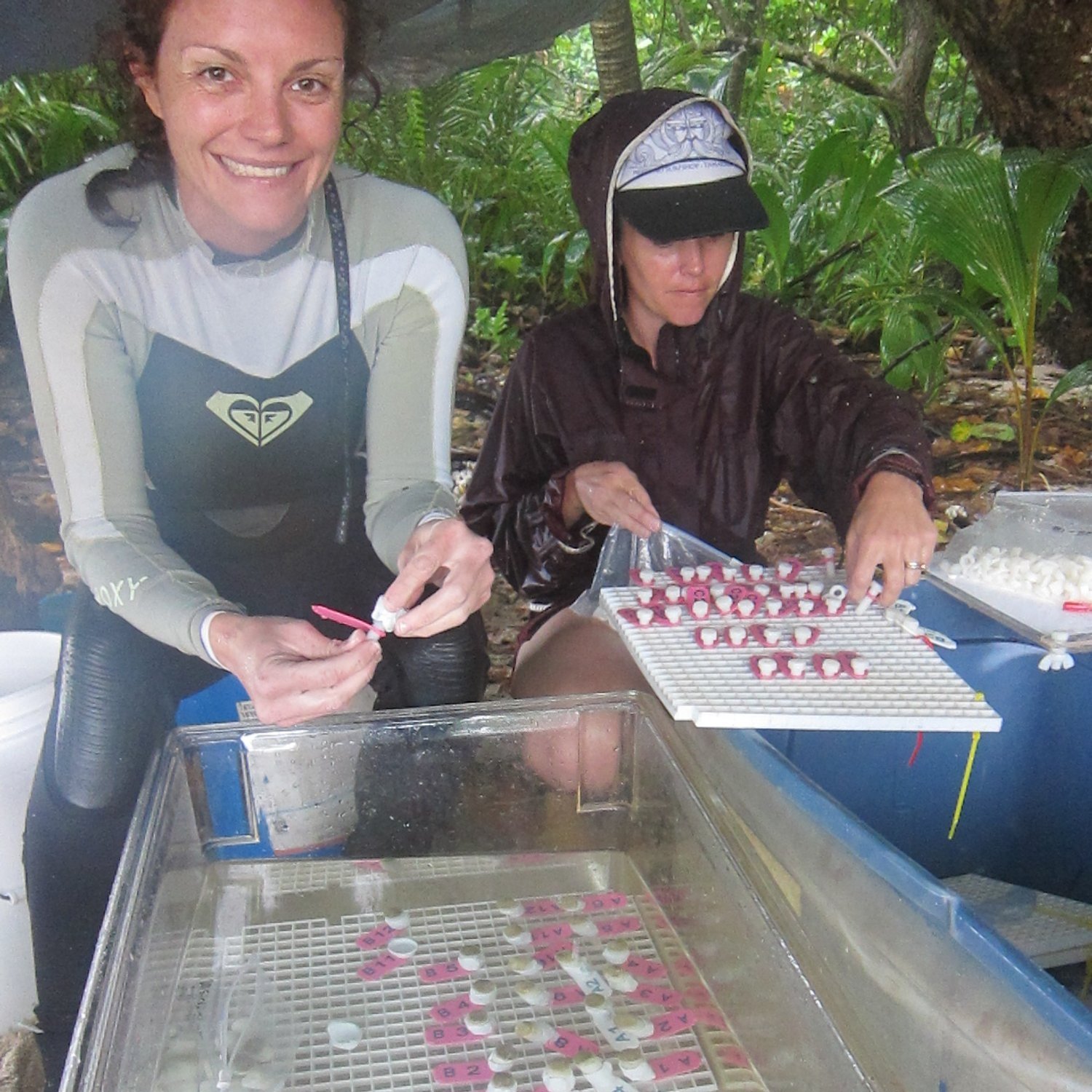Thermal Resilience
The survival of organisms on a warming planet is governed by limits to their physiology. Dr. Martell is fascinated by the ways organisms respond to changes in temperature–most notably, when they get hot. Read more about her efforts to understand what will happen to marine invertebrates in the coming decades.
Heating rate alters thermal performance
Coral thermal performance is often determined by the amount of bleaching that results from thermal exposure, and most coral studies have traditionally used heat shock assays to evoke bleaching, which is then extrapolated to environmental responses. However, using thermal performance curves of coral holobiont respiration rates and algal symbiont photosynthesis, Dr. Martell demonstrated that acute exposures (i.e., more rapid heating rates) drastically alter the physiology response and ultimately alter the metabolic budget available to allay bleaching.
Is thermal performance consistent over short time scales?
Dr. Martell went to Ofu Island, American Samoa to investigate some of the toughest corals in the world. The Ofu backreefs see 6 - 8 °C swings in temperature everyday! We know these corals are thermally tolerant, but were curious to understand whether they maintain their resilience, she moved them into more and less stressful sites and then assessed their thermal tolerance. More coming soon!
Does parasitism influence crab respiration rates?
Dr. Martell collaborated with undergraduate researcher Madeleine Abbott, Dr. Alyssa Gehman and Dr. Chris Harley to explore the effects of a castrating parasite on thermal performance of a hermit crab from the Pacific Northwest.
Photo Credit: Madeleine Abbott













